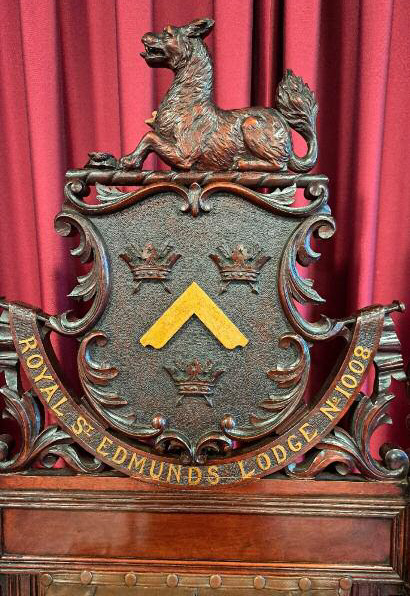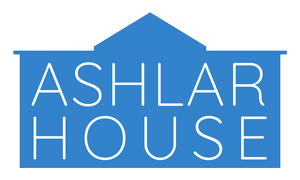Anyone visiting Ashlar House in Bury St Edmunds may have noticed the Headpiece on the Chair of Solomon in the main temple bears a stylised wolf standing on a head. This is a striking image which has deep meaning to the town and its history.
Why then a wolf and head? This heralds back to the origins of the town itself, when in the 9th Century, the great heathen army of the Vikings was waging war on the Kingdoms of England. Circa 870, the Viking horde wintered in Thetford, which was within the Kingdom of East Anglia ruled by King Edmund. When Edmund tried to beat the invading force out of his Kingdom he was defeated and captured. The Viking Jarl, Hinguar, then tortured and eventually killed Edmund, tying him to a post, shooting him with arrows before finally decapitating him. Hinguar then casually discarded the Kings head.

The Kings loyal followers searched for his him in order to give him a decent burial as befitting the King of the East Angles. As they searched the thickets they heard a voice call “Hic, hic, hic” (Latin) meaning “Here, here, here”. As they approached the voice they found It to be the Kings Head calling them. Guarding the King was a wolf standing guard with the head laying between its front paws. The loyal followers were able to collect the head from the wolf and re-unite it with the Kings body. According to legend, the head was fused back to the body which only showed a thin red line indicating the wound. The King was eventually placed in the care of a woman called Oswin, in a chapel in the nearby town of Beodericesworth. The miracle of the head and the wolf and its recovery enabled Edmund to be Cannonised to sainthood whereupon the chapel became a popular site for pilgrimage.
After the final Viking conquest, King Canute established the Abbey of St Edmund in the town of Bury St Edmunds, renamed by King Athlestan from Beodericesworth when he became King of all of England. King Canute decided to establish a great Abbey as penance for his forebears executing a noble saint.
The Coat of Arms bore the Head and the Wolf as its design along with a crown with arrows through it. The motto became “The Shrine of the King and the Cradle of Law”, denoting the miracle of St Edmund, King of East Anglia and the creation of the Magna Carta in Bury.
What is more fitting then, than for the Chair of Solomon to bear the design of the saint being guarded by a wolf for the Lodges of Bury St Edmunds. Especially as Magna Carta Lodge currently has a Viking, as members of the 1st Battalion Royal Anglian Regiment are known, as its occupant.
John ‘Jimmy’ Naylor, Magna Carta 8017 and ex-Viking
